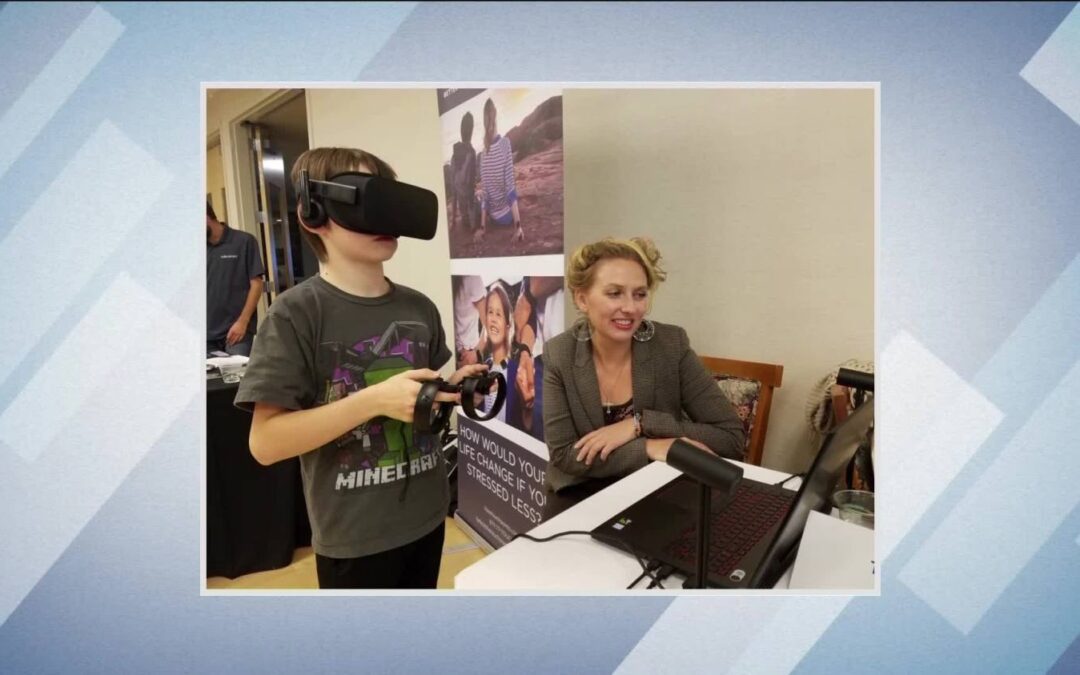Technology plays a significant role in our everyday life. Smartphones, laptops, tablets, televisions, and headphones have quickly become ubiquitous. Virtual reality is one of the fastest-growing new technologies. Virtual reality therapy is one of the most promising new healing modalities. It has an array of different applications, VR products provide stimulating and perception-altering experiences to users every day. However, VR has many more benefits than just providing entertainment and education. Today, VR is being used by psychologists to treat nightmares, relieve pain, and help fight phobias through the growing field of virtual reality therapy.
Virtual Reality Therapy for Children with Recurring Nightmares
Nightmares are common among individuals in the United States. According to research by Boston University, “In the US, between half and two-thirds of children and up to 15 percent of adults have frequent nightmares.” Nightmares cause a person to feel stressed, anxious, and scared. These feelings can last even after the nightmare is over. In fact, they can persist for days or weeks depending on the individual’s mental health and age. The most common symptoms of nightmares include a vividly upsetting dream, negative emotions, elevated heartbeat, low energy, fatigue, lack of concentration and weak memory.
Nightmares have a drastic impact on a person’s overall health and everyday life. This means immediate actions must be taken by individuals if they encounter any symptoms. To solve this crucial health issue, VR can be helpful. As it provides individuals with an artificial 3D environment that feels like a nightmare, but with low intensity and more control. The biggest advantage of using VR is that it allows us to edit and change what we want and how we want. Ultimately, by changing scenarios in a 3D environment, we naturally become better at changing scenarios. Studies have shown that by developing scenario-changing habits, we can make individuals better at controlling dreams. VR can also provide a vr therapy platform where certified therapists can treat patients in virtual environments that are beneficial to treatment.
In 2010, Jayne Gackenback, a Grant MacEwan University psychologist, found that people who played video games before bed may have better awareness and control in their dreams, which could help prevent distressing nightmares.” This research illustrates that VR helps prevent nightmares, and individuals have more control over their dreams. The more control they have, the less likely they are to suffer from nightmares. VR has some useful benefits in our daily life. Such a strong virtual environment can resolve many more problems than a nightmare.
The Benefits of Virtual Reality Therapy
Doctors also use VR to help individuals fight depression, treat anxiety and relieve stress. Virtual Reality Therapy is being used by psychologists today since it provides a distraction, provokes feel-good chemicals in the brain, and ultimately makes one’s state of mind more relaxed.
A state of absorption is important when a person is stressed. It provides a temporary break from the thousands of thoughts a person has each day. Experts estimate that the mind thinks between 60,000 – 80,000 thoughts a day. That is an average of 2500 – 3,300 thoughts per hour. Absorption plays a significant role in stress relief as it blocks thousands of negative thoughts.
Virtual Reality Therapy to Reduce Stress
By blocking negative thoughts, a person can feel less stressed and happier. VR treats stress by blocking negative emotions and makes one happier by releasing feel-good chemicals. In 2000, Hoffman, the director of the VR research center at the University of Washington in Seattle, “reported a case study examining the efficacy of VR compared with a standard video game for two adolescents (16 and 17 years old) undergoing burn wound care”. According to the study, “VR was found to decrease pain levels, anxiety and time spent thinking about pain.”
By decreasing stress levels, VR improves the quality of life for individuals and helps them live a happier life. As VR can improve one’s mental health, it means that it can resolve many more brain-related illnesses. Phobias are a very common problem among individuals. Most individuals have some kind of phobia. We all fear something depending on our circumstances, age, and childhood memories. Some common types of phobias include arachnophobia (fear of spiders), Ophidiophobia (fear of snakes), Entomophobia (fear of insects), and many more.
Virtual Reality Therapy to Reduce Fear
A recent study conducted at the University of Texas published that VR helped individuals overcome their fears. The study included 77 college students, who were exposed to VR technology regularly and were shown 3D images of spiders. The research concluded that VR helped individuals feel less anxious and more relaxed after long-term exposure. Their tolerance levels were increased, and arachnophobia was treated successfully.
The Future of Virtual Medicine
VR provides an imaginative 3D environment for individuals, which helps prevent nightmares, manage stress levels, and treat phobias. VR is a recent technology for most of us and some might even contradict the idea of using them. But various studies prove that VR is an extremely useful technology. Therefore, VR must be used by doctors to treat illnesses. VR is the future of medical treatments and provides many benefits. This suggests that VR should be used by doctors and we should let technology serve us.

